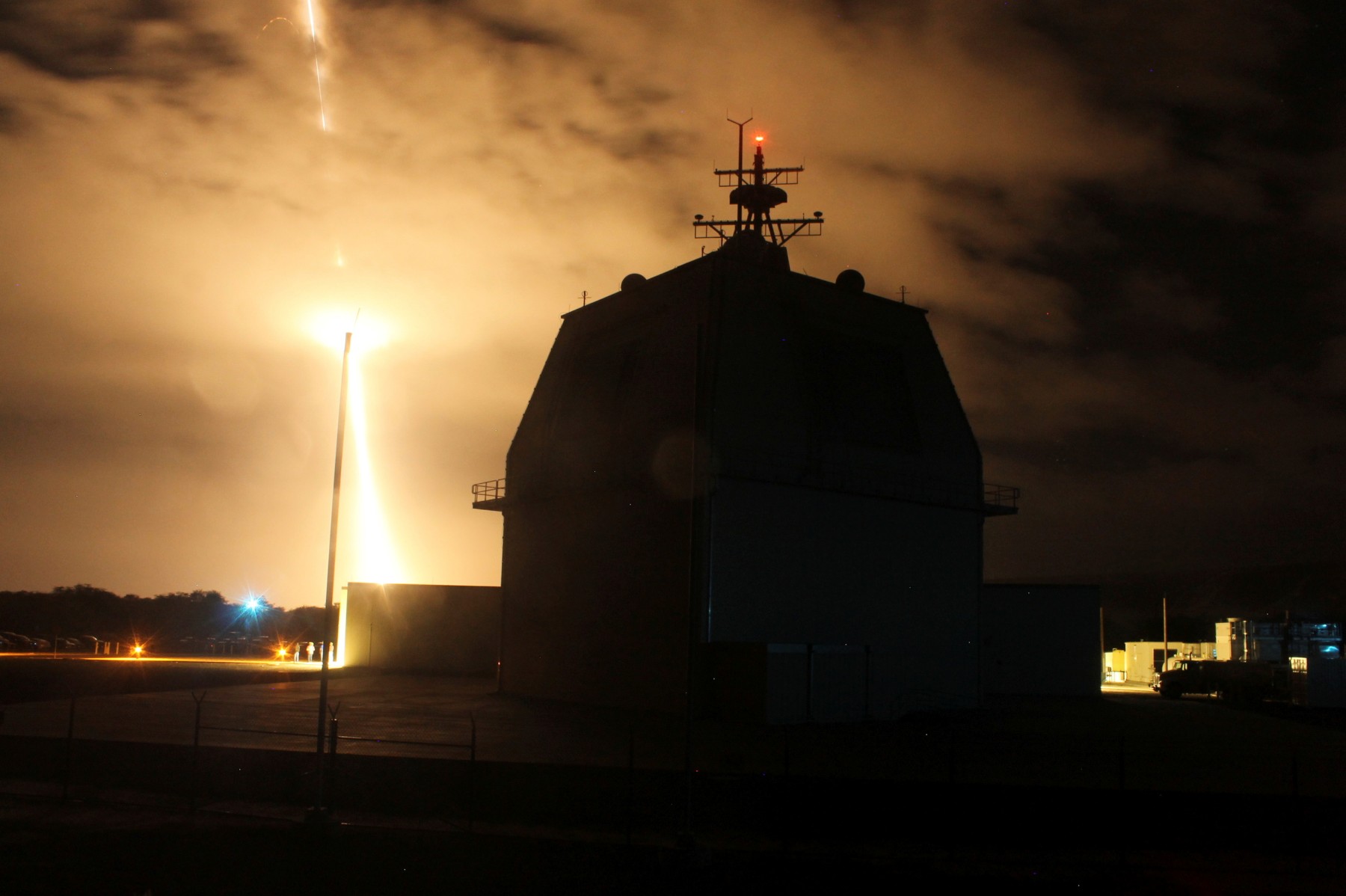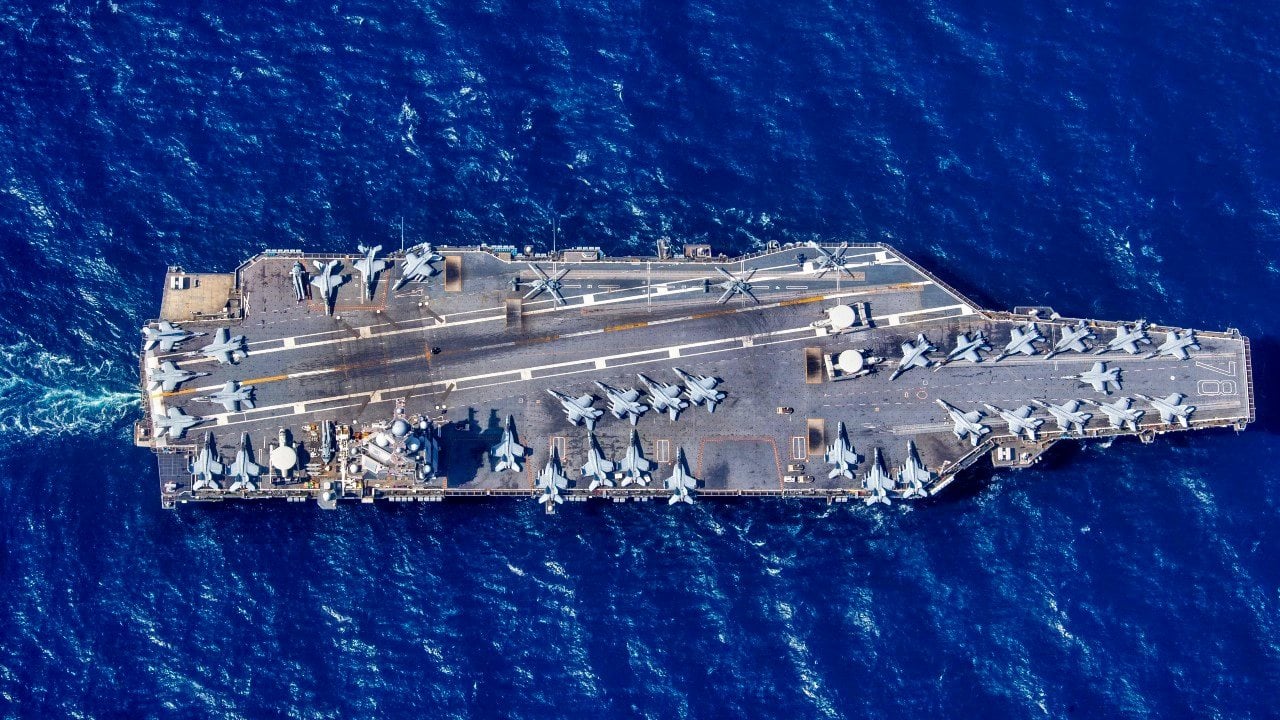Lasers: The Ultimate Way for the U.S. Navy to Kill Ballistic Missiles?

Simply put, most of the U.S. Navy's warships don't have the power output for a laser that could instantly destroy a missile. It will likely require nuclear reactors – like those on the Nimitz-class and Gerald R. Ford-class supercarriers. Lasers also need to remain locked on a target, which could be a problem for warships moving at high speeds in rough seas.
Why Can't We Use Lasers to Counter Ballistic Missiles and Drones in the Red Sea? Though the Iranian-back Houthi rebels in Yemen haven't successfully hit a U.S. warship in the Red Sea or Gulf of Yemen with a missile or unmanned aerial systems (UAS), it hasn't been for lack of trying. United States Navy destroyers have shot down dozens of inbound kamikaze drones and multiple missiles. It was just last week that one missile came within a mile of the United States Navy’s Arleigh Burke-class destroyer USS Gravely (DDG-107) – mere seconds from striking the warship.
Fortunately, the warship's Phalanx Close-in Weapon System (CIWS) was able to destroy the missile in flight.
It was a close call, but it was also a far more cost-effective means of destroying the missile.
Even as the U.S. has been successful in countering every missile and drone to date, the Houthis could be winning – at least in monetary terms. As Politico.com reported in December, the Pentagon has expressed concerns as to how it costs taxpayers around $2 million to employ an anti-aircraft missile to shoot down a $2,000 drone. Even the missiles being employed by the Houthis have a price tag less than the air defense missiles used to counter them.
This has raised the question again as to why lasers couldn't be employed.
It has been just over two years since Congress provided the Missile Defense Agency (MDA) the authority to research and develop laser technology to use in ballistic and hypersonic missile defense applications, as part of the fiscal 2022 National Defense Authorization Act (NDDA). It was just one of the most recent attempts to push forward the development of lasers.
The Airborne Ballistic Laser program was first initiated in the 1970s, and then was pushed aggressively during the George W. Bush administration, Defense News reported. However, cost overruns and technical challenges caused the program to ultimately be downgraded.
Lasers are in Development
Currently, several efforts are underway to develop anti-missile and/or anti-drone lasers. These included Lockheed Martin's Layered Laser Defense (LLD), a ground-based high-power laser weapon system that the defense giant claims is capable of countering targets ranging from unmanned aerial systems and fast-attack boats to cruise missiles.
"Laser weapon systems are a game-changer in many respects. First, they don't require much forward supply. Unlike traditional kinetic systems like artillery, they don't run out of bullets. The LLD's continuous power and thermal system, provided by Rolls-Royce, allows it to support multiple engagements in a mass raid scenario where other systems would need to stop engagements when their batteries are depleted," the company explained on its press site. "Another big bonus is cost. The cost per engagement for a laser weapon system can be very low because the only consumable item expended is the electricity to run the system."
It was just last month that the UK's Ministry of Defence (MoD) announced a successful test firing of its DragonFire, a line-of-sight laser-directed energy weapon (LDEW) that can still engage any visible target, including extremely small ones. It was reportedly able to strike a £1 coin from a distance of up to a kilometer away. In addition to its extreme accuracy, the platform can engage targets at the speed of light, while its intense beam of light can cut through the target, leading to structural failure or more impactful results – such as if an inbound missile's warhead is targeted.
Why Aren't We Using Them Now?
Given the hyperbole from Lockheed Martin and the recent test with the DragonFire, the question to ask is why aren't these lasers on warships right now.
The first issue is the power output.
As Alex Hollings noted for Sandboxx News last summer, a great deal of electricity is required. Lasers in the 100kW-Range Weapons can engage unmanned aircraft, small boats, rockets, artillery, or mortars; while 300kW-Range Weapons can be employed against the side of a cruise missile fuselage to destroy it or knock it off course. It will take a 1MW (1,000kW)-Range Weapon to engage ballistic or hypersonic missiles, and that may be limited to burning through the side of the fuselage.

A test of a laser in the 150kW-class weapon took 15 seconds of sustained fire to destroy an airborne drone.
The other issue is the range of laser weapons currently, which is less than a mile. Even the most optimistic projections for the near future still only suggest that lasers will be viable at ranges of less than five miles. That might seem like quite the distance, but the missile that was destroyed by the Phalanx CIWS on the USS Gravely was within a mile, mere seconds from impact.

Simply put, most of the U.S. Navy's warships don't have the power output for a laser that could instantly destroy a missile. It will likely require nuclear reactors – like those on the Nimitz-class and Gerald R. Ford-class supercarriers. Lasers also need to remain locked on a target, which could be a problem for warships moving at high speeds in rough seas.
Overcoming all of those issues could take years, and it is more likely that lasers will see use as ground-based defensive platforms long before they're employed on warships. Even then, they'll likely be part of a layered defense – used alongside other close-in weapons systems like the Phalanx.
- Questions and Answers
- Opinion
- Motivational and Inspiring Story
- Technology
- Live and Let live
- Focus
- Geopolitics
- Military-Arms/Equipment
- Sicurezza
- Economy
- Beasts of Nations
- Machine Tools-The “Mother Industry”
- Art
- Causes
- Crafts
- Dance
- Drinks
- Film/Movie
- Fitness
- Food
- Giochi
- Gardening
- Health
- Home
- Literature
- Music
- Networking
- Altre informazioni
- Party
- Religion
- Shopping
- Sports
- Theater
- Health and Wellness
- News
- Culture

